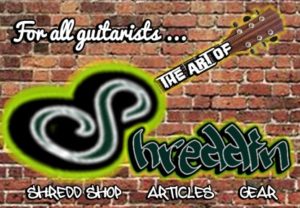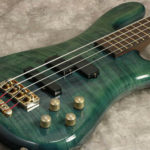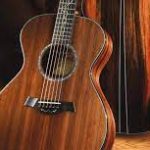vibrato pedals
Vibrato pedals can transform a plain tone into a rich experience. It’s the difference between someone remarking “Oh, your guitar sounds nice” and exclaiming “Wow, I don’t know how you did that but that rocked.” It’s all in the subtle enchantment of warbling your pitch with the vibrato effect
Vibrato Effects
Everyone has heard vibrato even if they don’t realize it. Almost every vocalist uses the effect naturally as they sing, and with the invention of the vibrato pedal guitarists can use it as well.

Vibrato is a subtle warbling of pitch by a specific number of semi-tones that hangs around the main note to create a richer and more interesting experience. The ear hears it a curious alteration of the main pitch rather than anything detracting.
With the guitar playing in the same frequency range as vocals, it’s only natural that the vibrato effect would make its way into a stompbox.
Today’s current line-up of vibrato pedals have all kinds of features that older ones didn’t have, meaning you can define the way yours performs in very specific ways defined by your preference or by what the song demands.

The vibrato effect is a regular pulsation of the pitch of a sound. The sound varies by a specified amount above and below the original pitch, passing through it over and over again. The word vibrato itself comes from the Italian “vibrare” meaning “to vibrate.”
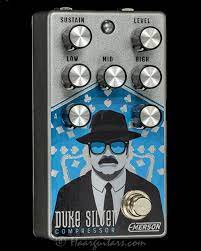
You may not recognize the effect from a description, but we’ve all heard it. Vocalists like to use vibrato at the end of phrases or during long phrases, as do violinists. There is a confusion in the guitar world, thanks to the misnamed “tremolo bar,” which is actually a vibrato arm.
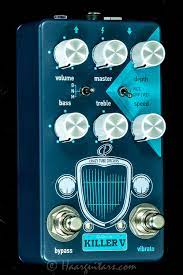
There’s not too much to worry about here besides one main consideration. Of course you’ll want to concern yourself with the durability of the chassis and switches and the sound quality of the effect, but other than that there’s just a few things to consider.
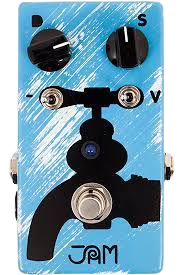
First and most important is to decide if you want a vintage sound. Because if you choose a vintage pedal, you will definitely get that sound.
The tech and electronics used in these pedals has come a long way, but they’re not produced at such a level that the prices have been driven far down like you see with other pedal types. So don’t go too cheap or you’ll end up with cheap electronics that may fail on you over time.
All you really must have here is a rate knob to control the speed and a depth knob to control how deep the pitch waves are. You’ll get an output or level knob to control the volume of the vibrato guitar effect, too.
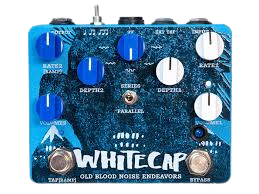
Some pedals start tossing in features like an added chorus effect, a way to change the waveform of the effect itself, and a tone knob to EQ the output.
WHERE TO PLACE IT IN THE SIGNAL CHAIN
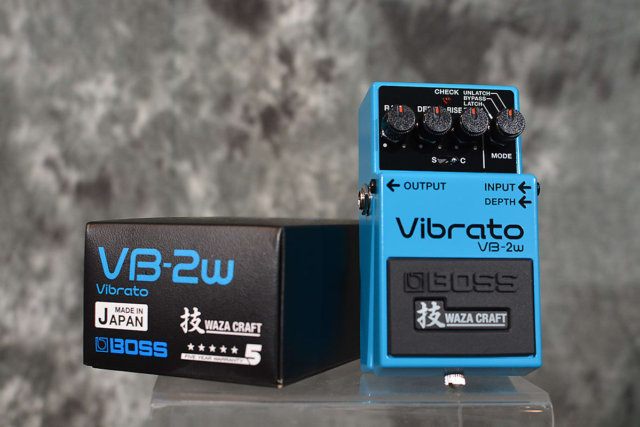
You’ll want to follow this general setup without straying too far:
Dynamics, Filters, & Pitch Shifters
Boost & Distortion
Modulation
Time
We go into much further depth in our official article on the topic, but for now let me just state that vibrato is a type of modulation, meaning it will come in the 2nd to last batch of pedals. You’ll want to already establish your waveform shape and volume before adding vibrato.
You could have a very strong argument for inserting this pedal in the “filters” section after dynamics, depending on if you actually use distortion or not.
If you don’t, placing it early in the “modulation” section is preferred, since you’re changing the pitch of the note. You want all of this happening before reverbs and delays though, otherwise you’ll change their pitch as well instead of feeding them an oscillating signal.
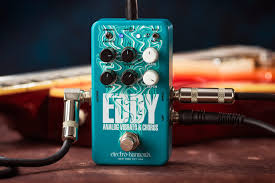
UNDERSTANDING THE KNOB SETTINGS
Although you’ll find some very fine pedals offering only two knobs, you’ll generally find four knobs so we’ll cover them all. You will always find a Speed knob that affects how fast the pitch warbling occurs in time.
While there’s no tap tempo, you don’t really need it for guitar vibrato like you might want on vocals (which you’d control yourself automatically anyways). You’ll also always see a Depth knob, which controls how many semi-tones of warble you receive.
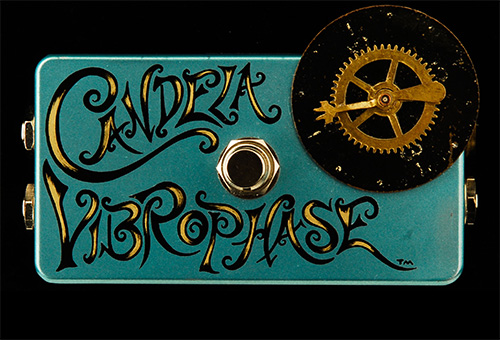
For example, you may only want to oscillate up and down one whole note for one song but for another you may choose up to two and a half whole notes.
The other common knobs are Rise Time and Tone. Rise Time lets you control an “attack” of sorts, where the effect isn’t delayed so much as slowly engaged until it reaches its full expression. Tone is an equalization knob that lets you control how much brightness to include. It’s essentially a high shelf EQ that you sweep down the frequency spectrum as you turn it up.
Occasionally you’ll see other options or these labeled differently depending on the manufacturer, but these are your four basic knob options.
Recommended Vibrato Pedals
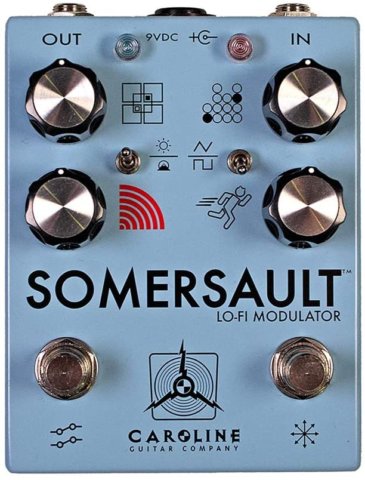
Caroline Guitar Somersault Chorus, Vibrato
Caroline Guitar Company Somersault Lo-Fi Modulator From seasick wobbles to glitchy bleep-bloops and I think I can huffs and puffs, the crazy sounding stuff was actually the easy part for us. So once you’re done maxing out different settings to hear what kinds of bizarre wowie zowie sounds you can make with this thing, we encourage you to explore the subtleties of how each control interacts with the others, and the remarkable range of sounds that you can quickly and intuitively dial in
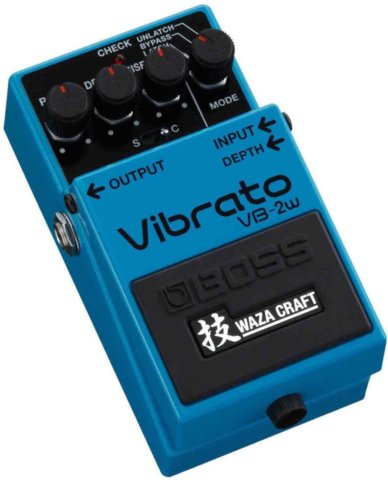
BOSS WAZA Craft Vibrato
The VB-2 Vibrato has been rediscovered by modern players looking to create unique guitar textures with stompbox effects. Thanks to its expressive, one-of-a-kind sound, this rare pedal has gone on to become one of the most valuable BOSS effects in the vintage market.
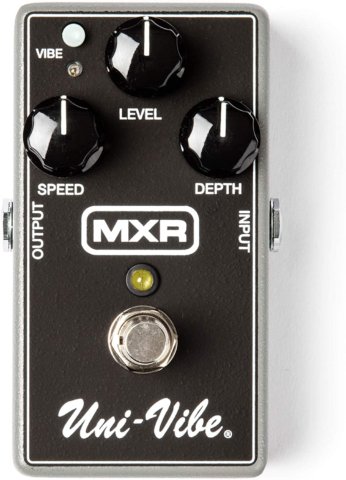
Dunlop M68 Uni-Vibe® Chorus/Vibrato
Iconic chorus/Vibrato true to the classic late ’60s tone
Simple three-knob interface
True bypass
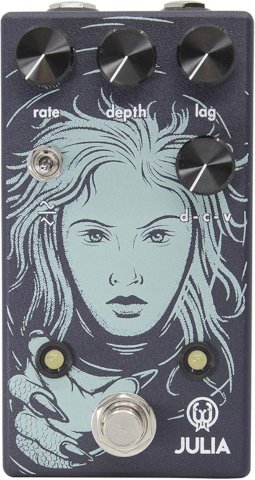
Walrus Audio Julia Analog Chorus/Vibrato
Julia is able to produce mild smooth chorus, to seasick vibrato and everywhere in between. With controls like Lag, Dry-Chorus-Vibrato Blend, and selectable analog LFO wave shapes, you are able to dial in all types of classic and unique chorus/vibrato sounds.
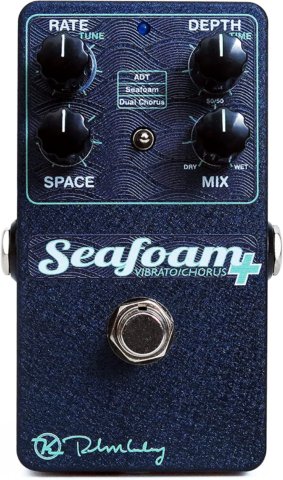
Keeley Seafoam Plus Vibrato
It provides a classic tone that you expect and which has become part of many classic tunes. Set the rate for slow and the depth for wide, and enjoy a really spacious sounding chorus. Roll the Mix Control all of the way up for Vibrato.
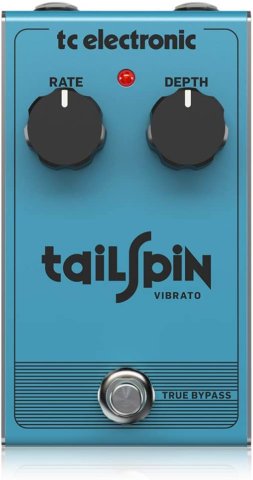
TC Electronic TAILSPIN VIBRATO
Classic true pitch vibrato
Legendary, all-analog bucket-brigade (BBD) circuit
Classic 80’s inspired vibrato circuit
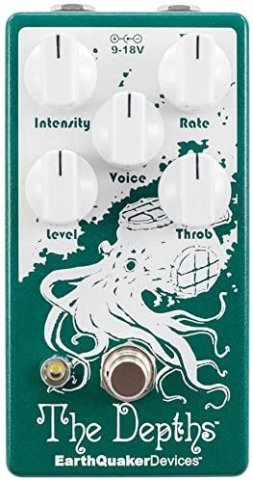
EarthQuaker Devices The Depths V2 Analog Optical Vibe
The Depths is our take on the classic optical vibe circuit. Now you can swab the decks with the same lush, pulsating, three-dimensional swirling sound you know and love, with some modern accouterments for all you land-lubbers out there.
Guitar & Gear Articles

